Abstract
Low-birth-weight babies are most at risk of infant mortality. Unfortunately, in many developing countries it is not possible to weigh babies accurately because of the lack of robust scales. This article describes the results of a WHO Collaborative Study to investigate whether birth weight can be predicted accurately using chest circumference and/or arm circumference. The implications of the results for paediatric practice in developing countries are discussed.
Full text
PDF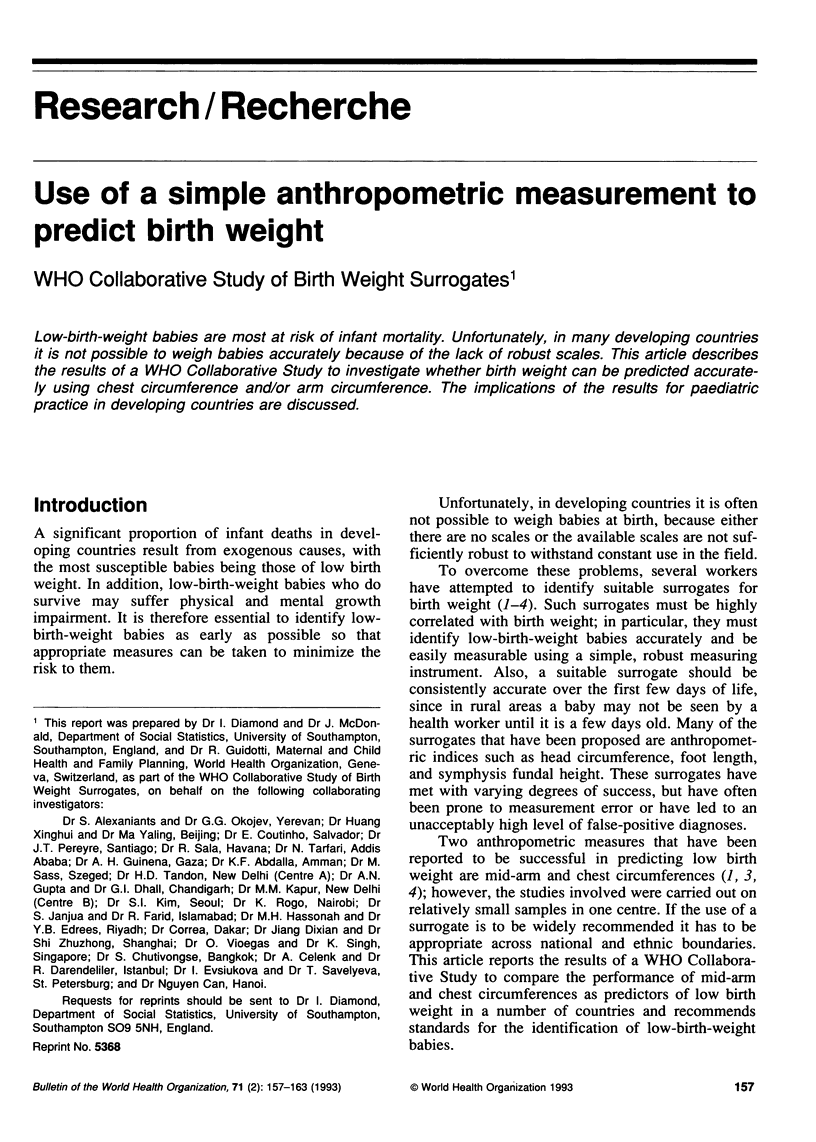
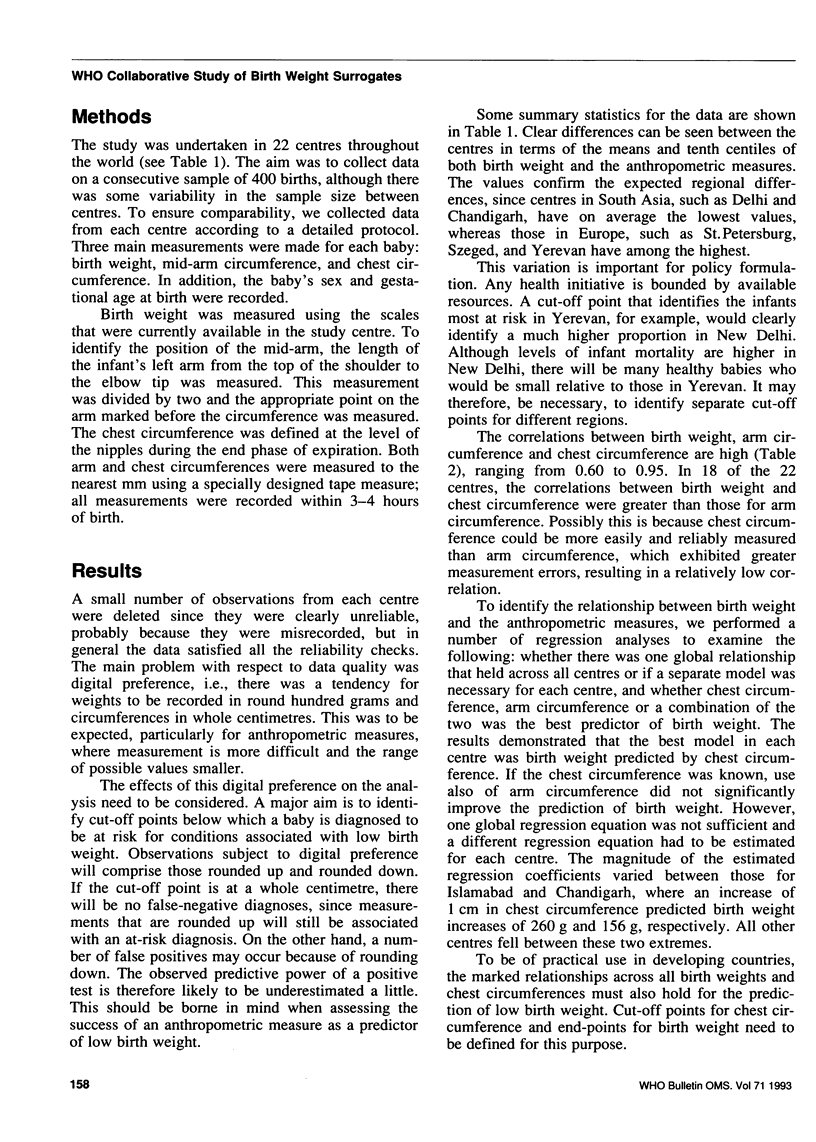
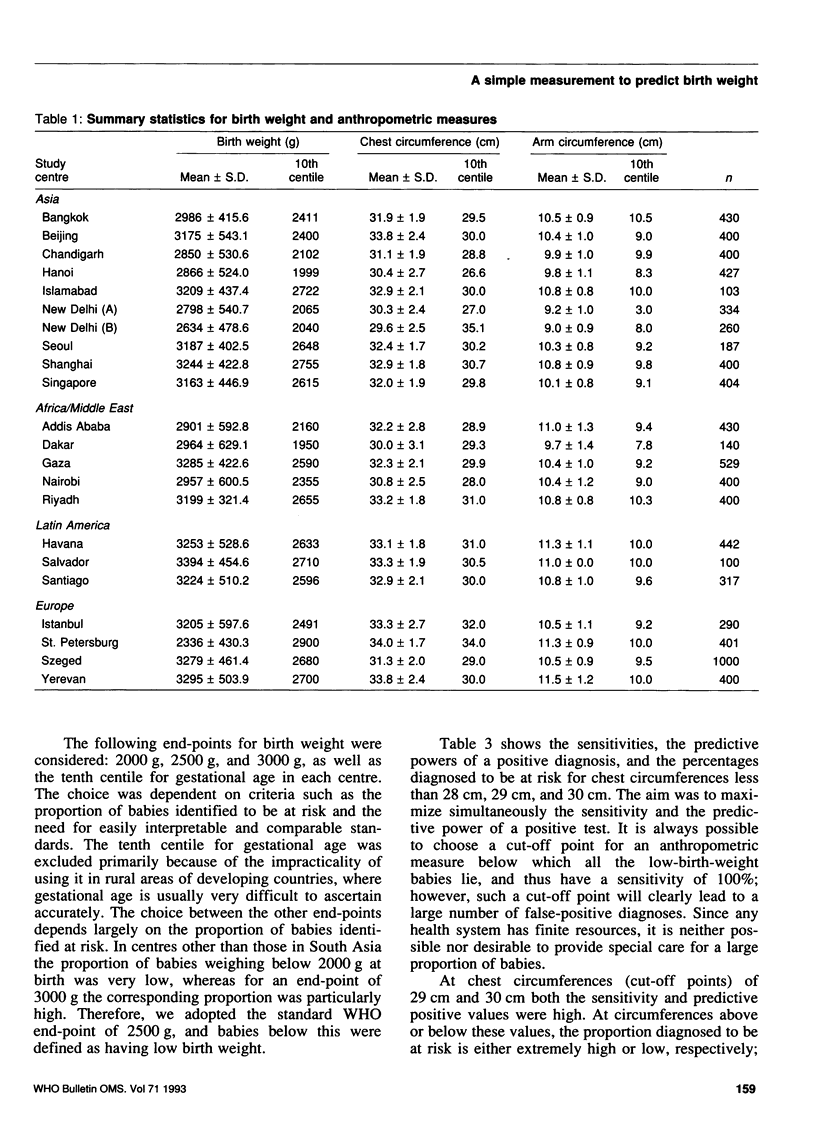
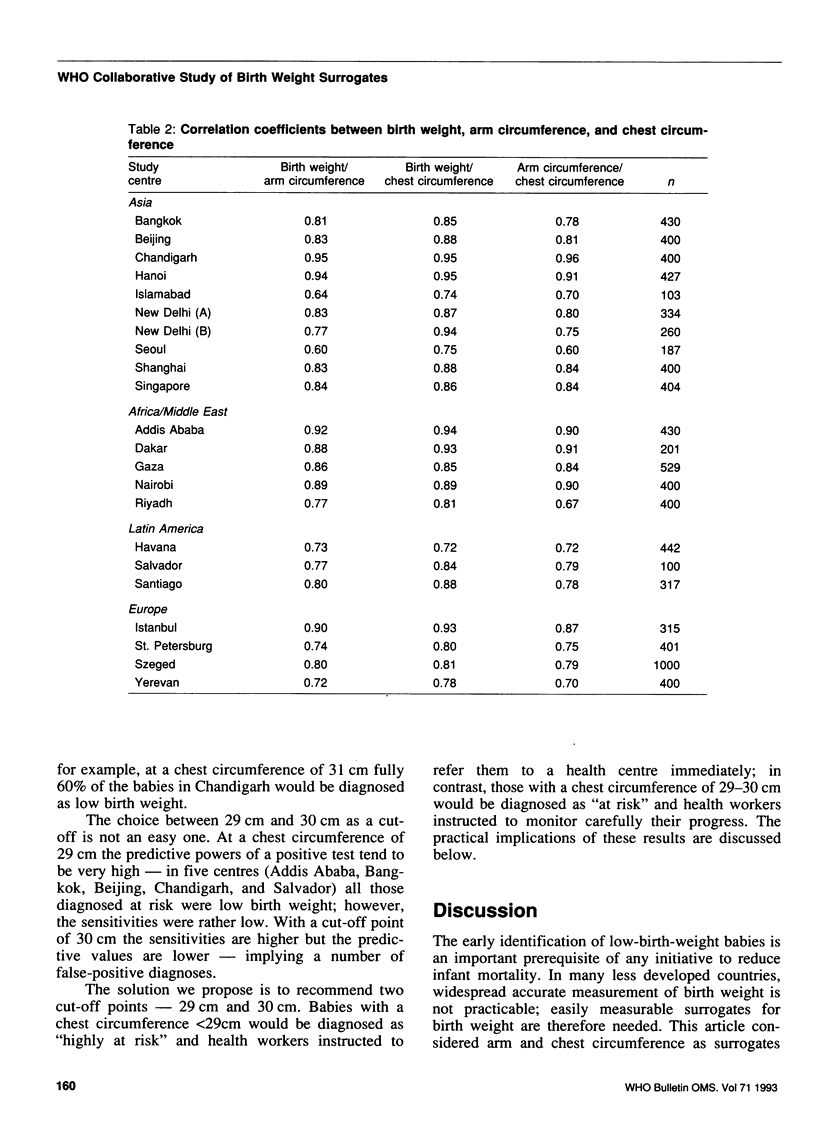
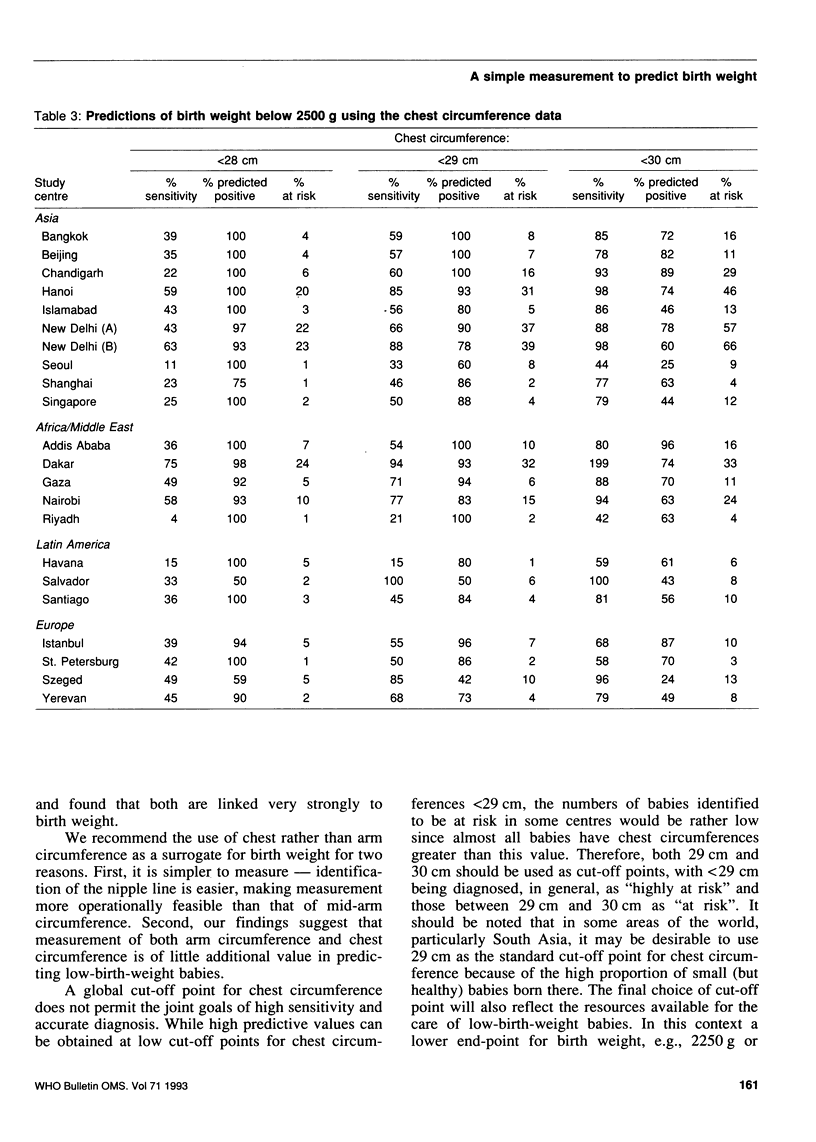
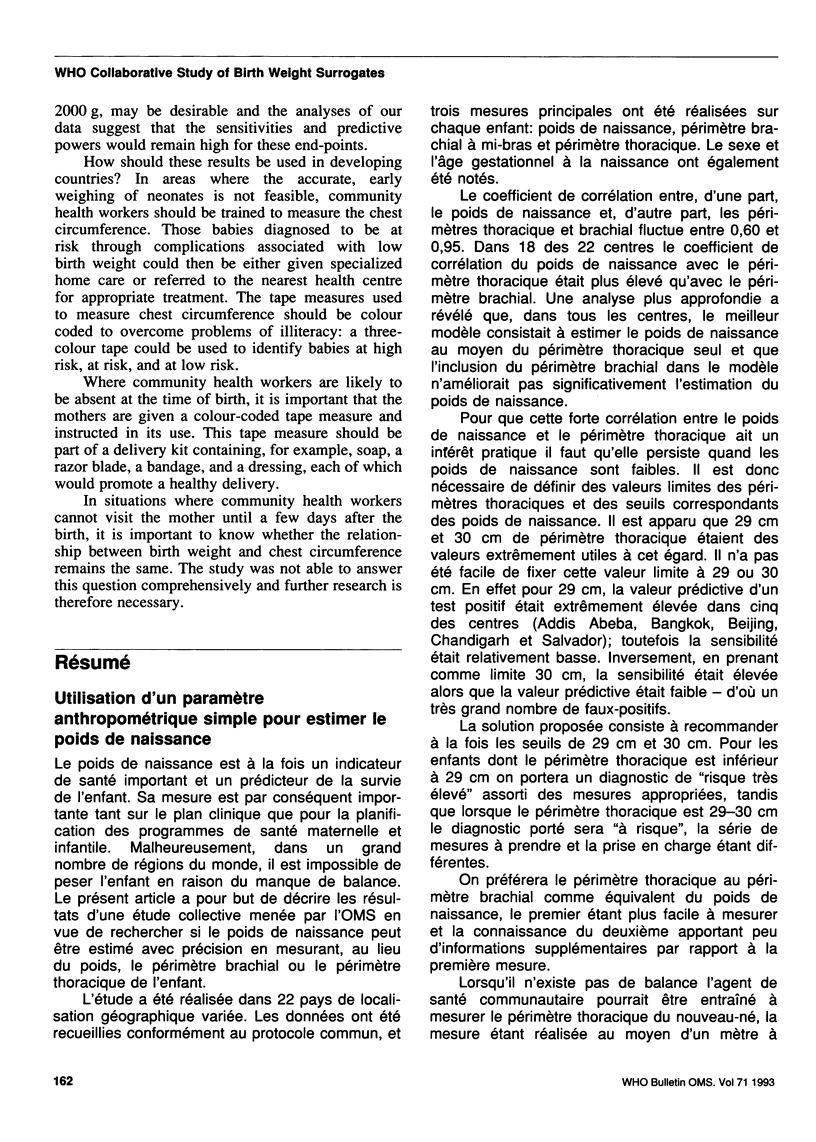
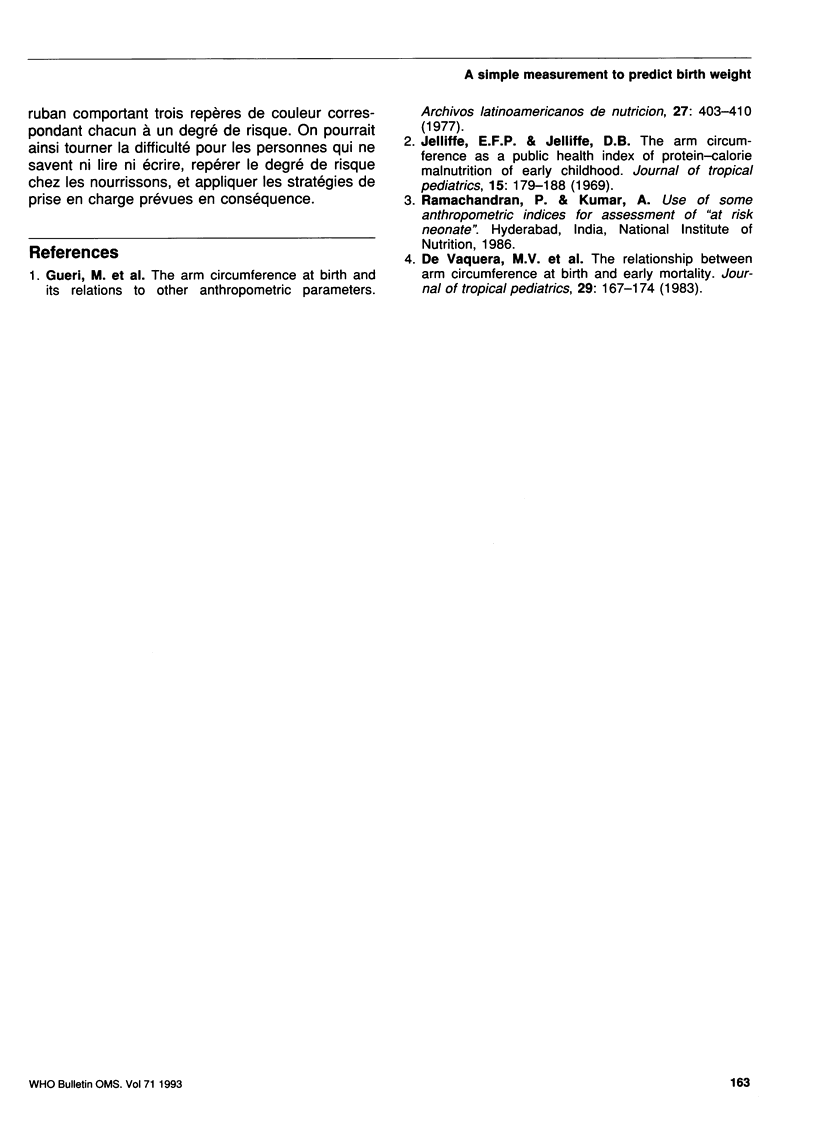
Selected References
These references are in PubMed. This may not be the complete list of references from this article.
- De Vaquera M. V., Townsend J. W., Arroyo J. J., Lechtig A. The relationship between arm circumference at birth and early mortality. J Trop Pediatr. 1983 Jun;29(3):167–174. doi: 10.1093/tropej/29.3.167. [DOI] [PubMed] [Google Scholar]
- Gueri M., Justum P., Knight P., Hinds V. The arm circumference at birth and its relations to other anthropomeric parameters. Arch Latinoam Nutr. 1977 Sep;27(3):403–410. [PubMed] [Google Scholar]


